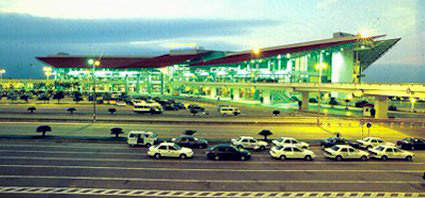Atatürk International Airport is the main gateway to the Istanbul region in Turkey. Opened in 1924, it was formerly known as Yeşilköy International Airport and was renamed as Atatürk International Airport in the honour of Mustafa Kemal Atatürk, the first president of Turkey, in 1980.
Atatürk is the third busiest airport in Europe and is being operated by Tepe-Akfen-Ventures (TAV). TAV won the operatorship of the airport for 15.5 years in 2005. The passenger traffic at the airport was approximately 30m in 2009 and increased to 41.94m international passengers in 2015.
The airport witnessed a terrorist attack by suicide bombers in June 2016 killing 36 and injuring 147 people.
Expansion
The expansion works of the airport began with the expansion of the terminal building in 2004. It is being funded by TAV.
Construction of three new boarding gates at the international terminal and a new air traffic control tower is underway. The unused facility buildings were dismantled. The old control tower will be dismantled once the new tower becomes operational.
One of the existing runways (05/23) is planned for expansion and a new runway is planned parallel to it. The runway expansion is estimated to cost $210m.
The expansion will enable the runway to handle heavy bodied aircraft and will equip it with a new lighting system compatible with CAT3 standards.
The baggage handling system at the airport has been upgraded as a result of security issues encountered in 2006.
ALSTEF was ordered to supply 10 PEDS (primary explosive detection system) machines and six EDS (explosive detection system) devices in 2006.
ALSTEF also extended the baggage handling system at the airport in 2010 by installing three PEDS machines and a tomography machine to control the inbound baggage.
Terminals
The airport has four terminals. Terminals A, B and C are dedicated for domestic, international and cargo operations respectively. The fourth terminal is a general aviation terminal located at A14 apron in north-west of the airport.
The domestic and international operations were initially handled by the domestic terminal alone. Later, a new modernised international terminal was inaugurated in 2001 to handle international operations.
The domestic and international terminals are joined by walkway and travelators. Both the terminals have an arrival area on the ground floor and a departure area on the upper floor.
The international terminal includes conference halls, business class lounges and a lost baggage counter. Most of the eateries and retail outlets are located at this terminal.
Both the domestic and international terminals have facilities such as currency exchange services, ATMs and restaurants.
The general aviation terminal covers an area of 2,300m² and features two halls for domestic and international terminals. A waiting hall features facilities such as wireless internet and TV. Additionally, there is a meeting hall at the terminal.
Runway
The airport has three runways designated 18L/36R, 18R/36L and 05/23. The runways 18L/36R and 18R/36L are 3,000m long and are surfaced with concrete. The runway 05/23 is 2,600m long and is surfaced with grooved asphalt.
The runway 05/23 was initially 2,300m long and 60m wide, and designated as 06/24. It was later expanded by 300m and was re-designated as 05/23.
Parking
Car parking is available in both domestic and international terminals. The car park is spread over an area of 179,000m².
The domestic terminal provides covered and open-air car parking spaces.
Short and long-term parking facilities are also available at the domestic terminal.
The international terminal offers approximately 7,000 car park spaces, out of which some are covered and rest are open-air parking spaces.
The airport also offers parking facilities for disabled passengers.
The car park has two bays of 5m x 5m. Pedestrian access ramps are provided at the car park for easy access of passengers.
The car park serves approximately three million vehicles a year. A licence plate recognition system is installed at the car park to enhance safety.
Ground transportation
Numerous transportation facilities such as buses, cars and shuttles are available to and from the airport. In addition, a light rail service connects the airport.











